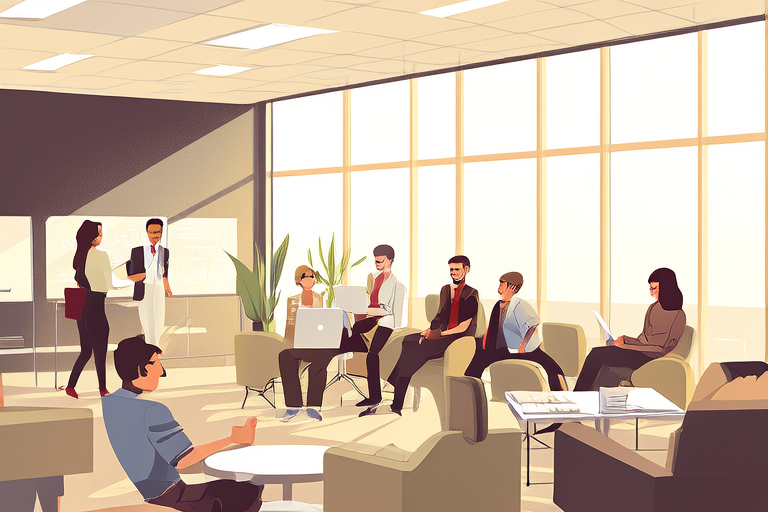Introduction
In today’s fast-paced and diverse work environments, effective communication and collaboration are crucial for success. Workplace etiquette plays a pivotal role in fostering a positive and productive atmosphere. Understanding and adhering to proper office etiquette can enhance team dynamics, improve interpersonal relationships, and ultimately lead to better outcomes for both individuals and organizations. This article delves into key aspects of workplace etiquette that can boost collaboration, providing practical tips and real-world examples.
The Importance of Professional Communication
Clear and Concise Messaging
Effective communication is at the heart of any successful workplace. Whether through emails, meetings, or casual conversations, clarity and conciseness are essential. Avoiding jargon and overly complex language ensures that your message is easily understood by all parties involved. For instance, when drafting an email, always consider the recipient’s perspective and tailor your tone accordingly.
Action Tip: Before sending an important email, read it aloud to yourself. This helps catch any awkward phrasing or unnecessary verbosity.
Active Listening
Listening is just as important as speaking. Active listening involves fully concentrating on what is being said rather than passively hearing the speaker’s words. It includes paying attention to non-verbal cues such as body language and facial expressions. By actively engaging with others, you demonstrate respect and show that their input is valued.
Action Tip: During meetings, take notes not only on what is said but also on how it is said. This can provide valuable context for future discussions.
Building Strong Relationships Through Respect and Empathy
Respecting Boundaries
Respecting personal boundaries is fundamental in maintaining healthy working relationships. This includes understanding each colleague’s preferred method of communication—whether they prefer direct messaging, phone calls, or face-to-face interactions. Additionally, respecting time zones and work schedules when collaborating across different locations can prevent misunderstandings and foster mutual respect.
Action Tip: Always ask colleagues about their preferred communication methods before initiating contact. This shows consideration for their preferences and enhances cooperation.
Cultivating Empathy
Empathy allows us to understand and share the feelings of others. In the workplace, this means being mindful of the challenges and pressures your coworkers may be facing. By showing empathy, you create a supportive environment where everyone feels valued and heard. For example, if a colleague is struggling with a project, offering assistance or simply expressing understanding can make a significant difference.
Action Tip: Take a moment to acknowledge the efforts and achievements of your teammates, even in small ways like a quick “thank you” or a brief note of appreciation.
Leveraging Technology for Enhanced Collaboration
Utilizing Collaboration Tools
Modern technology offers numerous tools designed to facilitate collaboration. Platforms like Slack, Microsoft Teams, and Google Workspace enable seamless communication and document sharing among team members. Familiarize yourself with these tools and encourage their use within your organization. However, it’s equally important to establish guidelines for their appropriate usage to avoid information overload or misuse.
Action Tip: Organize regular training sessions for new employees to ensure everyone is comfortable using collaboration tools effectively.
Managing Digital Distractions
While technology can enhance productivity, it can also become a source of distraction. Constant notifications from various applications can disrupt focus and reduce efficiency. Implement strategies to minimize digital distractions, such as setting specific times to check emails or turning off non-essential alerts during focused work periods.
Action Tip: Use apps like Freedom or Focus@Will to block distracting websites or play background music that promotes concentration.
Creating a Positive Work Environment
Promoting Open Dialogue
An open dialogue encourages transparency and trust within the workplace. Encourage team members to voice their opinions and concerns freely without fear of judgment. Establishing safe spaces for discussion can lead to innovative ideas and improved problem-solving capabilities.
Action Tip: Schedule regular brainstorming sessions where everyone has an equal opportunity to contribute.
Recognizing and Rewarding Efforts
Acknowledging the hard work and dedication of your colleagues fosters a sense of belonging and motivation. Simple gestures like recognizing someone’s contribution in a meeting or celebrating milestones can go a long way in boosting morale.
Action Tip: Create a recognition program where employees can nominate peers for outstanding performance. This not only motivates individuals but also strengthens team cohesion.
Conclusion
In conclusion, mastering workplace etiquette is essential for creating a collaborative and harmonious work environment. By focusing on clear communication, respecting boundaries, cultivating empathy, leveraging technology, and promoting open dialogue, you can significantly enhance teamwork and overall productivity. Start implementing these practices today to build stronger relationships and achieve greater success in your professional endeavors.
Action Advice: Begin by identifying one area where you can immediately apply these principles—whether it’s improving your email writing skills or organizing a team-building activity. Small steps can lead to substantial improvements over time.
